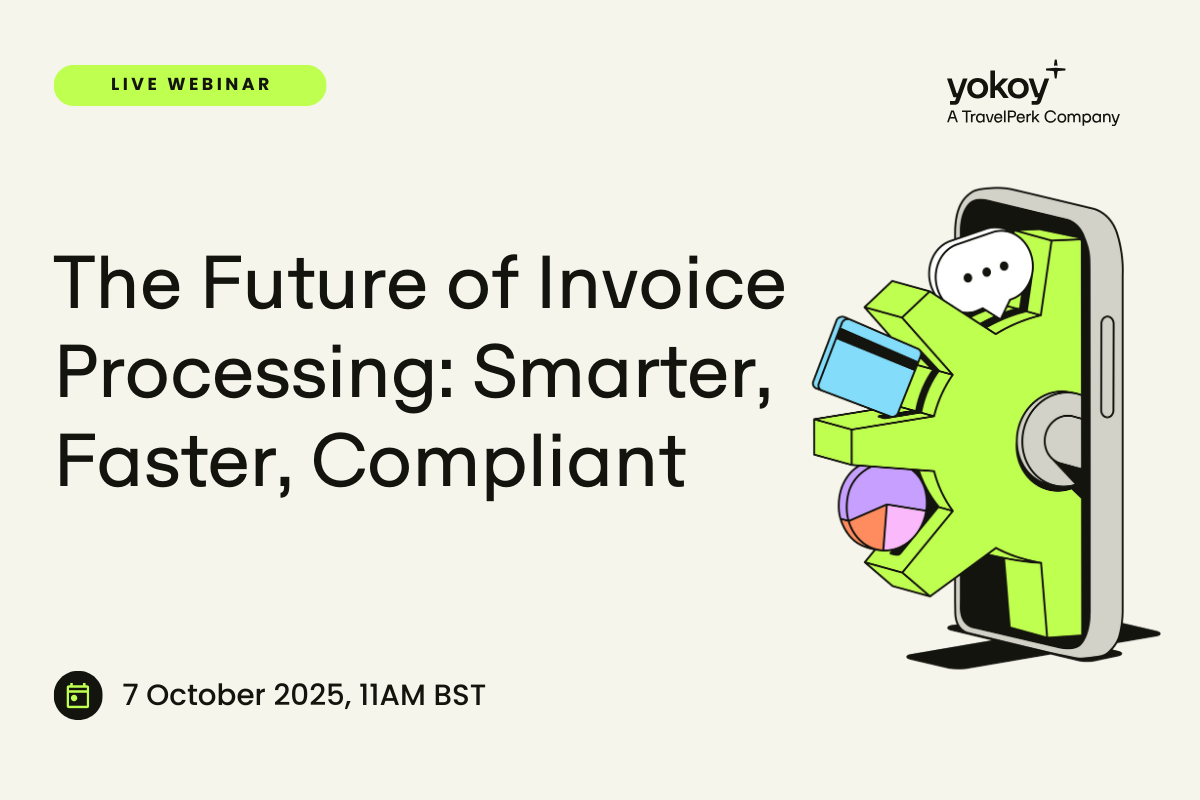Home / Preventing Overspending with Item-Specific Limits
Preventing Overspending with Item-Specific Limits
- Last updated:
- Blog

Finance leaders are well aware that managing company finances responsibly requires more than just keeping an eye on the total budget. A practical approach currently gaining momentum is the use of item-specific limits—a strategy that places caps on individual spending categories. This approach brings a level of precision to budgeting, helping companies prevent overspending and maintain financial health without constantly monitoring every transaction. By setting boundaries for items like office supplies, travel expenses, or subscriptions, organisations gain a structured framework that reduces impulse purchases and aligns with their broader financial goals. Do you want to learn more? Read on for all the details!
The risks of unrestricted spending on specific items
When companies allow unrestricted expenditure on certain items, they often encounter risks that can disrupt their financial goals and strain budgets. This is what can happen:
Budget overruns
Without limits on specific items, costs in high-spend areas—like travel, recurring subscriptions, or even certain department supplies—can easily spiral out of control. This quickly leads to budget overruns, forcing companies to reallocate resources from other essential areas or, worse, go over budget entirely.
Lack of oversight
Without item-specific controls, tracking spending at a granular level becomes challenging, and it’s easy for certain expenditures to slip under the radar. Departments might overspend on seemingly minor items which, when added up, can eat into the company’s budget and make it difficult to keep track of financial health.
Increased financial risk
Unrestricted spending opens the door to unauthorised or unnecessary purchases, which may lead to a build-up of unwanted expenses on bank and credit card statements. This unchecked spending can increase the need for external funds, strain resources, and limit the company’s ability to build up savings accounts or meet other financial goals.
You see, without spending controls, businesses can quickly face costs that spill over the budget—especially with non-essential items like additional office supplies, subscriptions, and even impulse buying encouraged by social media trends. While small purchases may not seem like a lot of money individually, they add up to significant expenditures over time. Employees might view low-cost items from their business-related shopping lists as minor, but collectively, they can lead to financial strain and even possible credit card debt. For companies aiming for financial well-being, it’s critical to manage these cumulative costs through specific spending controls.
Blog article
Why Smart Corporate Cards Are a Must for Businesses
Payment methods have been undergoing a massive modernization phase, and the traditional corporate credit card is no exception. But the real question is, are these cards truly smart or just another gimmick?

Francesca Burkhardt,
Product Marketing
Benefits of item-specific limits for spend control and compliance
Setting item-specific limits gives companies control over expenditures and aligns spending with policy requirements, creating a stronghold of compliance.
Benefits for spend control:
Improved budget compliance: Item-specific limits provide a clear financial structure that helps companies stay within budget. By setting caps on specific items, such as travel or subscriptions, companies can guide spending in high-cost areas, which helps prevent budget overflows.
Enhanced spend visibility: With item-specific limits, it’s easier to monitor spending in real time. Companies can quickly see where funds are allocated, identify trends, and make informed decisions about where adjustments may be needed, improving the overall control of finances.
Better financial governance: Establishing limits at the item level helps instil a culture of financial responsibility. Employees understand spending boundaries, which creates consistency in managing expenditures and ensures that purchases align with financial priorities.
Benefits for compliance:
Easier audits: Item-specific limits make the audit process simpler by creating an organised record of expenses that are categorised and justified. This streamlines auditing, saving time, and resources while supporting transparency.
Improved policy adherence: Limits reinforce adherence to company policies by setting clear boundaries around allowable expenses. This framework encourages employees to follow financial guidelines, preventing purchases that don’t meet organisational standards.
Reduced risk of unauthorised purchases: With specific caps in place, companies reduce the chances of unauthorised or impulse purchases. Employees are prompted to assess whether each purchase is essential, helping to maintain fiscal discipline.
By implementing item-specific spending limits, companies gain control over non-essential expenses. These controls help set boundaries and prevent unnecessary spending on low-priority items, keeping finances dedicated to essentials. Moreover, with set limits, it becomes easier to manage both short-term costs and long-term goals. It is just like having personal savings accounts or emergency funds: By ensuring that financial priorities stay on track, you can put money aside for other projects and success.
Item-specific limits also provide an organised structure to monitor expenditures, helping companies optimise their monthly budget and control cash flow. This level of control is essential for protecting against costly interest rates and safeguarding financial well-being.
Implementing effective item-specific limits in 3 steps
Creating effective item-specific limits involves a few straightforward steps to align these limits with the company’s goals.
Step 1: Identify high-priority items
Start by identifying high-priority items that require closer budget control. These may include categories like business travel, tech equipment, or recurring subscriptions—areas where overspending has the potential to derail financial goals.
Step 2: Set appropriate limits
Next, determine suitable limits for each identified item. These should reflect the average cost, urgency, and importance of each category. Companies may set strict caps on items with volatile costs while allowing more flexibility for necessary expenses, like employee training.
Step 3: Regularly review and adjust
Regular reviews keep item-specific limits relevant to current financial goals. Adjusting these caps periodically helps companies adapt to changing needs, whether due to inflation, seasonal demand, or new business objectives.
Blog article
Simplifying Expense Management: How Corporate Cards Benefit Businesses of All Sizes
Although most corporate card programs offer cash back on transactions, these savings aren’t the main driver for companies who choose to equip their employees with business credit cards or debit cards.

Francesca Burkhardt,
Product Marketing
Leveraging technology to automate and enforce item-specific limits
Technology plays a crucial role in enforcing item-specific limits, especially when it comes to tracking spending across various channels, from retail purchases to online shopping. Virtual cards and automated budgeting apps help track these expenditures in real time, making it easy to flag non-essential spending or larger splurges that could risk the company’s finances. By automating these controls, companies can avoid unwanted charges that would otherwise affect their checking account, safeguarding funds for more essential purposes.
With real-time monitoring, finance teams can also keep an eye on high-volume transactions and receive instant alerts if spending exceeds set limits. Automated systems capture the full transaction history, providing valuable data insights. This capability simplifies reviewing expenses against budgets, offering transparency that protects against financial risks like high-interest debt.
Automated limit enforcement: With automated systems, companies can set predefined limits that prevent spending from exceeding established caps. This ensures that spending policies are automatically enforced without requiring constant manual oversight.
Virtual credit cards: Virtual credit cards offer an innovative solution to manage spending. They allow companies to assign unique card limits for different items or departments, giving employees the flexibility to make necessary purchases within controlled budgets.
Spending apps: Spending apps are increasingly valuable for managing item-specific limits. These apps allow employees to monitor their spending in real time, receive alerts, and ensure they stay within predefined boundaries, reinforcing healthy spending habits.
Real-time monitoring: Real-time monitoring enables companies to track spending as it happens, helping managers address overspending as it occurs. This capability ensures that spending aligns with financial goals and minimises the risk of unauthorised purchases.
Data insights: Data-driven insights allow companies to analyse spending trends over time. By identifying spending patterns, companies can make informed adjustments, ensuring that item limits continue to support financial objectives.
Introducing Yokoy Pay
Yokoy Pay integrates advanced AI-driven spend management features designed to simplify expense handling, enforce compliance, and provide a streamlined financial control platform. Allow us to introduce each aspect of Yokoy Pay and explain how it helps your business manage expenses more effectively.
Customisable item limits
Yokoy Pay allows businesses to define precise spending limits for individual employees, teams, or departments. Companies can set these caps according to different criteria, such as department needs or spending history, which provides a tailored solution that keeps budgets on track while meeting specific operational requirements. These customisable limits ensure spending aligns with policy, reducing unauthorised purchases and encouraging responsible financial behaviour.
Granular spend controls
Yokoy Pay’s granular spending controls provide an advanced level of oversight over corporate expenditures. This approach enables businesses to manage funds precisely, minimising waste and ensuring every transaction serves a purposeful, budget-aligned goal. Additionally, the platform’s real-time controls and permissions help reduce financial risks by only allowing necessary expenses.
Real-time visibility
One of Yokoy Pay’s core strengths is its capacity to provide real-time visibility into spending across the organisation. Managers can monitor expenses as they occur, accessing live data on employee spending habits and transaction details through a centralised dashboard. This immediate insight enables more proactive financial management and makes it easier to adjust budgets on the go, which is especially beneficial for managing high-volume or international transactions.
AI-powered compliance monitoring
Yokoy Pay’s AI-powered compliance monitoring automates the tracking and enforcement of policy adherence. The platform actively verifies transactions against established policies, flagging potential breaches or unusual spending patterns. This reduces the burden on finance teams and ensures that policy violations or compliance risks are identified and addressed swiftly. By automating these checks, Yokoy Pay also helps companies mitigate fraud and align spending with regulatory standards.
Comprehensive reporting
For deeper financial insights, Yokoy Pay offers comprehensive reporting tools. These tools automatically generate detailed reports on spending trends, budget compliance, and transaction history, simplifying the audit process and helping finance teams track spending patterns over time. Reports are customisable and exportable, making it easier to integrate Yokoy Pay data into existing financial workflows.
So, in short: Our solution empowers your organisation to take full control of its finances by combining customisable item limits, granular spend controls, and real-time tracking. With features designed to optimise money management, Yokoy Pay enables teams to manage budgets effectively, aligning day-to-day expenses with long-term financial goals.
Next steps
The freedom to spend confidently within set boundaries is critical to any organisation aiming to manage its resources responsibly. With Yokoy Pay, businesses are much less vulnerable to overspending or credit card debt caused by unchecked expenses. The solution empowers companies to set purposeful limits that align with savings goals, ensuring a future where financial health is sustainable and adaptable.
Imagine a workplace where expense reports are effortless, budgets stay on target, and striving for compliance doesn’t give your team a headache. Yokoy Pay offers exactly that—a chance to transform routine financial processes into a part of everyday operations. So, if you’re ready to rethink how your company manages spending, Yokoy Pay is ready to show you what’s possible.
In this article
See intelligent spend management in action
Book a demoRelated content
If you enjoyed this article, you might find the resources below useful.


